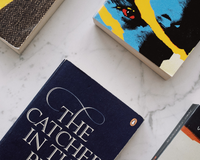Some say that a great magazine is 50% good content and 50% good presentation. But only the top players in the industry know that marketing and distribution are just as important as creating a high-quality production! Indeed, it is all of this together that makes the perfect print. Here is a brief introduction to the many steps that are carried out one by one to print a magazine, starting from after the main content is ready.

Step-by-Step Printing of A Magazine from Layout to Distribution
Designing an Engaging LayoutOnce we know what content we are going to publish, we need to decide on a layout that is both catchy and unique.
Grid-based layouts offer structure and balance and work best for informative or professional magazines. Layouts that go full-bleed really make a big splash by taking an image all the way to the edge of a page.
Modular designs chop up content into pieces; it work well for active or lifestyle publications.
Single-focus spreads emphasize one feature or picture with a clean dramatic look. Each layout has a function to improve the reader's experience through the magazine.
Selecting Printing MaterialsIs the right printing material another determinant in magazine success? This way the material to be printed looks professional and achieves the purpose of the magazine.
The glossy paper gives an excellent finish to bright colors and is used by fashion or photography magazines.
Non- glossy and dull are another finish type that looks smoother and are preferred when publishing business or lifestyle magazines.
Uncoated paper has a tactile quality, which prints can instantly feel; it is often used in magazines that advocate the use of environmentally friendly sources. The use of linen or felt textured paper provides the interactor a unique feeling.
Finalizing Content ProofsThis will ensure that from the layout to the text printed, everything comes out just right before the final print. All the designs, from typography and images to overall flow, have to be viewed again in relation to the vision of the magazine.
It captures errors or inconsistencies unnoticed prior to the previous draft.
It is also a test for color correctness so that images appear precisely as intended. Once this proof is set up, then examine every page to make sure nothing has been overlooked.
With good quality checking content proof, the final print job will then be free of mistakes and of high quality.
Managing the Printing ProcessIs it necessary to monitor each element touching the printing process in order to achieve maximal effect? There are a few important issues that a person should bear in mind when it comes to the process of printing.
Specifically, layout and color correctness is required on the design file. The correct paper type, ink, and coatings have to be sourced to arrive at the finish that is required in a specific job.
The context of the printing machine does not allow any error to happen and maintains the leading of the ink and alignment for exact computation.
After it is printed and has dried up, or when it has healed, we should be very careful so that we don’t get it wet again. Cutting and packing that follow quality standards guarantee that the end product is not defective.
Organizing Magazine DistributionProper distribution requires several steps to ensure that the magazines are safe in transit without sustaining damage. First packaging would be done to ensure the magazines do not get damaged.
The magazines are then sorted whether to a retail house or for direct mail. The labelling and addresses will be made accordingly to avoid mistakes.
The distribution channels are selected as postal services or courier companies for effective functioning. Timelines are maintained to meet deadlines in a timely delivery. Proper communication with distributors ensures everything follows the plan.
Finally, assuring that magazines reach the right locations in good condition does it all.
In Closing
Designing an engaging magazine layout involves selecting styles that suit the publication's tone and audience while ensuring content is visually appealing. Often magazine producers will take additional steps to ensure the right kind of creators find a place in their work and sustainable practices are involved. All such useful steps are taken to draw a direct connection between the magazine and the brand that is issuing it.





